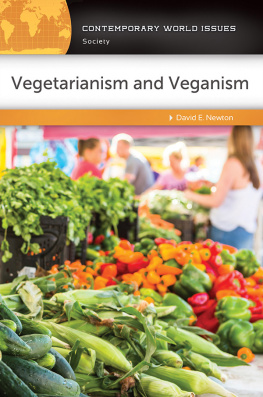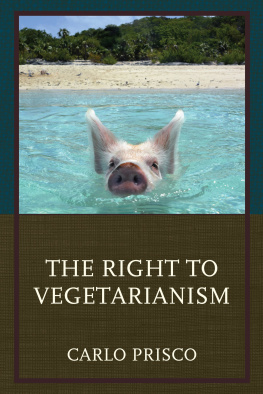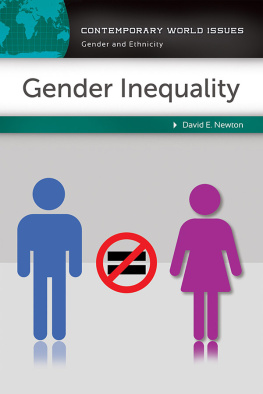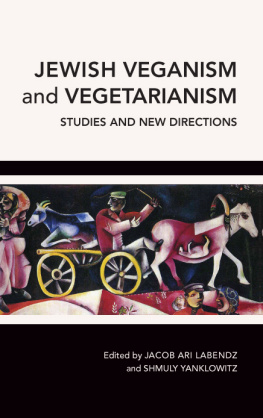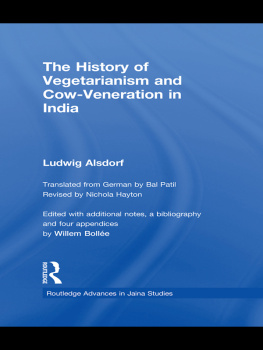This is a book about vegetarianism and veganism, the practices of eating foods other than meat, fish, and, sometimes, the products of these foods. A question that has intrigued researchers for many decades is when vegetarianism first appeared. One of the most familiar narratives we have about the life of the earliest humans is that their diet consisted primarily of meat and meat products, especially bone marrow. This diet, some researchers have said, made possible the transition from our hominid (human-like) ancestors to the modern species of Homo sapiens, to which modern humans belong (see, e.g., Aiello and Wheeler 1995). Many researchers disagree with that analysis and say that plant materials constituted an important part, perhaps most, of the diet of early humans. To follow this story, with some of its complexities and ambiguities, lets begin with the rise of H. sapiens.
The earliest date at which the human species is known to have existed is about 300,000 years ago (Hublin et al. 2017; Richter et al. 2017). That date falls within a period of human history known as the Paleolithic period, or Old Stone Age. As indicated by this name, the period began with the first use of tools by humans and continued until the rise of primitive agricultural technology, in about 10,000 bce . This period is known as the Neolithic period, or New Stone Age. The debate about early dietary practices among humans dates to these early periods.
Perhaps the most challenging question in any discussion of vegetarianism and carnivorism (the eating of meat) during the Stone Age is how we can possibly know what humans of that age were eating. Certainly, they left no recipe books or menus, so one must find other ways of determining the eating habits of the period. Researchers have found at least three ways to solve this problem: physical evidence, studies of primitive tribes in the modern world, and analysis of dietary patterns among great apes. (A fourth field of research, dealing with the genetics of dietary evolution, will be discussed in of this book.)
Much of what is known about the eating habits of the earliest humans comes from markings on bones and teeth found in ancient settlements. Teeth are the hardest of all materials found in both humans and other animals, and bones are among the most common fossils remaining today. The study of scratches, pitting, and other marks on both teeth and bone has become a well-developed field of anthropology, revealing substantial details about the daily lives of Stone Age humans. For example, wear patterns on the teeth of fossilized human skeletons can reveal whether a person ate primarily a meat-based or plant-based diet. And markings on an animal bone can be used to determine when carnivorism was popular, how people cut and ate bones, and how animal flesh was prepared for meals (such as by cooking rather than being eaten raw) (Braun, Pante, and Archer 2016).
Other types of physical evidence are also available. For example, recent studies have found starchy granules embedded in the surfaces of a mortar and pestle dating to about 30,000 bce . Researchers concluded that their findings meant that exploitation of plant resources was very important for hunter-gatherer populations and that people of the time were able to process food plants and already possessed a wealth of knowledge that was to become widespread after the dawn of agriculture (Lippi et al. 2015). Numerous other examples exist of the use of plant materials by early humans. Another study from 2013 found remnants of garlic mustard seeds on the surface of pottery dating to about 4,000 bce . Researchers noted that this spice has no nutritional value and was used, therefore, for the purpose of enhancing the flavor of the food being cooked and consumed (Saul et al. 2013). One of the most impressive studies on plant-based diets among Stone Age humans was published in 2016 by a group of Israeli scientists. Their investigation of an early community at Gesher Benot Yaaqov, Israel, dating back as far as 780,000 bce , found more than 9,000 remains of plants from at least 55 taxa, including seeds, nuts, fruits, and vegetables (Melamed et al. 2016).
Another approach for determining Stone Age diets is through the study of the most primitive tribes that exist currently on the planet. The presumption is that tribes that have been largely untouched by modern civilization may be following a lifestyleincluding dietary patternssimilar to those of our Stone Age ancestors. A considerable amount of research on primitive tribes was conducted well before the end of the 20th century, much of which was summarized in two classic studies by Canadian dentist Weston A. Price and American biologist Charles B. Davenport. Although these reports are obviously dated, they still provide useful information about the diets of primitive peoples in the 20th century (Davenport 1945; Price 1939/2010).
The overriding conclusion from the many societies reported on by Price and Davenport is that people tend to adopt diets that are appropriate for the environment in which they live. Groups who live near the Arctic Circle, for example, tend to rely to a considerable extent on foods that are available to them, such as whales, narwhal, ringed and bearded seals, caribou, polar bear, muskox, birds and their eggs, and saltwater and freshwater fish. A relatively small proportion of their diet comes from the limited availability of plants, such as berries, grasses, tubers and stems, roots, and seaweed. By contrast, primitive tribes in the interior of Africa have very different diets. The Masai, for example, are widely known for their efficient culture based primarily on cattle and goats. The primary constituents of their diet are the foods available from these animals: meat, blood, and milk (also see Campbell 2015).
One of the most interesting features of the search for plant-based diets among Stone Age peoples is the difference in morphology among ancient and modern versions of many fruits and vegetables. The earliest type of carrot known, for example, had the shape of a thin, forked root, while the first corn plant had barely distinguishable kernels that were barely edible (Lewis 2018). Such primitive forms of fruits and vegetables, then, must have had substantially less nutritional value than do their modern counterparts and, therefore, must have been of limited usefulness in a healthful diet.
One line of research on human Stone Age diets goes as follows:
- Apes and monkeys are the closest evolutionary relatives to humans.
- Studying the diets of apes and monkeys, then, may provide a hint as to the dietary patterns of the earliest humans.
That line of research goes back many decades and has now produced rather convincing evidence about the diets of wild apes and monkeys. It appears that the vast majority of these primates pursue vegetarian diets, focused primarily on fruits and vegetables. The diet of various species of monkeys, for example, consists (depending on the species) of anywhere from 75 percent to 99 percent plant material, while that number for baboons is greater than 90 percent. The natural diets of the great apes are also very high in plant materials, ranging from almost 90 percent among chimpanzees to more than 97 percent for orangutans and gorillas (Milton 2003, 49).
Some authors have argued that these data are misleading and that apes and monkeys also eat foods coming from animals. They point out that chimpanzees sometimes kill and eat monkeys, usually the red colobus monkey, to augment their plant diets. (In fact, this dietary choice is actually threatening the survival of some monkey species; see Lwanga et al. 2011.) Critics also point to a varied diet of insects, insect eggs, larvae, worms, termites, ants, and bees, sometimes taken intentionally and at other times unintentionally as passengers on a main plant food. The question that remains, then, and considering this list of animal-based foods, is whether the ape and monkey diets of todays primates is primarily vegetarian or not and, if so, how closely that is likely to resemble diets of Stone Age humans.

